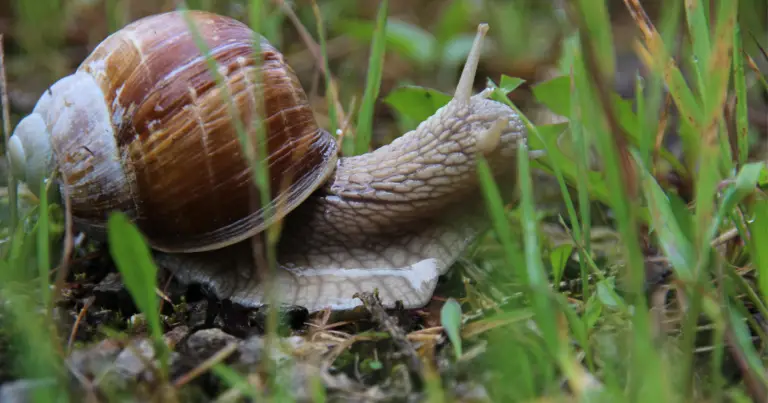Mystery Snails and Bettas: A Comprehensive Care Guide for Tank Mates
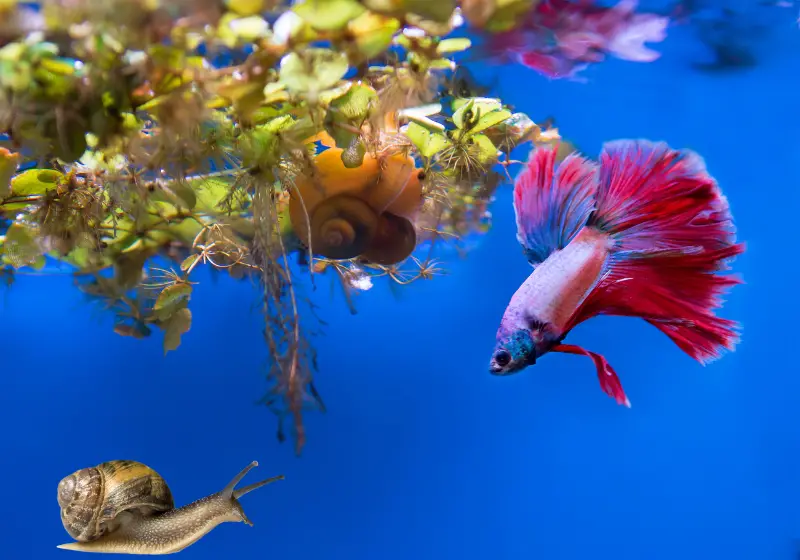
Mystery snails and bettas fish are popular aquatic pets, so it’s natural to wonder if they can coexist harmoniously in the same tank. To answer this question, it’s essential to understand the compatibility, behaviors, and environmental requirements of both species.

The good news is that these two creatures can indeed be tank mates. They work well together because they require similar water quality and share the same day and night cycles. Additionally, mystery snails are large (two to three inches in diameter) and have opercula, making them less tempting targets for bettas to attack 1. Another advantage to adding a mystery snail to your betta’s tank is that they feed on algae and fish flakes, helping to clean up excess waste in the tank2.
Monitoring your tank’s overall health is crucial to successfully keeping mystery snails and bettas together. Ensure that your betta has enough space to swim and that both species have access to food and hiding spots to make their shared home a harmonious one 3.
Contents
Table of Contents
Mystery Snails and Bettas: An Overview

Mystery snails and bettas are popular among aquarium enthusiasts, and many wonder if these two species can coexist in the same tank. The good news is that they can make compatible tank mates, provided that their living conditions and temperament suit each other.
Mystery snails are generally at the top of the list of snails that can fare well with bettas. One of the reasons for their compatibility lies in their similar water quality requirements. Both species thrive in water conditions that closely mimic their natural habitat, with a pH level ranging from 6.5 to 7.5.
Moreover, mystery snails and bettas share the same day and night cycles, making them suitable partners in a shared environment.
While bettas are known for their vibrant colors and flowing fins, they have somewhat of a reputation for aggression. However, the docile nature of mystery snails can help maintain a peaceful coexistence between these aquatic creatures.
Mystery snails are not known for nipping at betta fins and typically gravitate towards the bottom of the tank, minimizing any potential conflicts with bettas who prefer to swim in the upper zones of the aquarium.
Another advantage of keeping mystery snails with bettas is that snails can contribute to maintaining a clean tank environment. Mystery snails are natural scavengers that feed on leftover food particles and algae. This reduces waste buildup and helps keep the water clear, ultimately benefiting your betta’s health.
When setting up a tank for both mystery snails and bettas, make sure to provide adequate space and hiding places to reduce the chances of territorial disputes. You’ll want to select a tank of at least 10 gallons with live plants, caves, and decorations that your betta can use as a refuge. Additionally, ensure that water parameters are well-regulated by regular maintenance and monitoring.
In short, mystery snails and bettas can coexist in the same tank with careful attention to their shared needs. A harmonious tank environment with these two species can create a visually striking and dynamic aquatic community.
Understanding Betta Fish
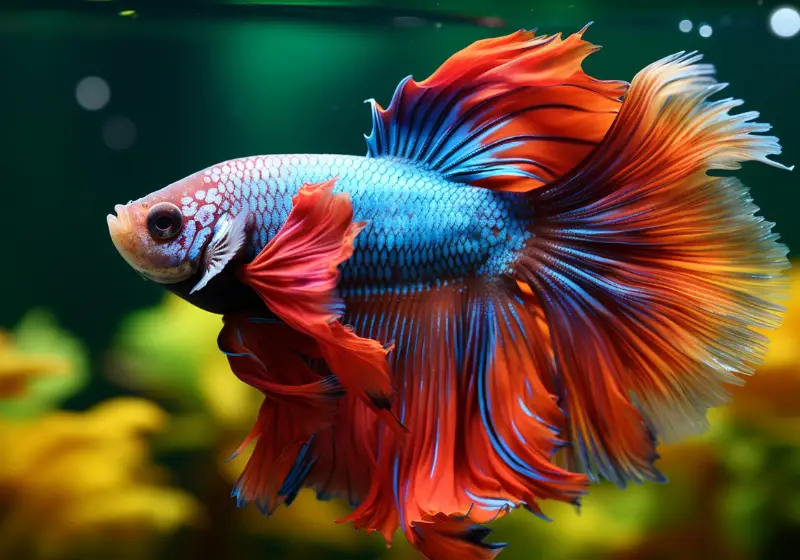
Betta fish, also known as Siamese fighting fish, are popular for home aquariums due to their vibrant colors and unique personalities. To provide the best care for your betta fish, it’s important to understand their behavior, temperament, and needs.
Bettas are known for their aggressive and territorial nature, especially male bettas. This aggression is often displayed through flaring their gills and fins, chasing, and even nipping at other fish. Male bettas are generally more aggressive than female bettas and may fight to the death if housed in small tanks.
Female bettas can also be aggressive, but they can sometimes be housed together in larger groups called “sororities” if given enough space and hiding places.
To reduce aggressive behaviors, provide your betta fish with an appropriate tank size, a minimum of 5 gallons for a single betta, and larger if you plan to include other tank mates. Be sure also to offer plenty of hiding spots and plant cover to allow them to feel secure and establish territories.
Understanding your betta fish’s personality is essential when adding tank mates. Some bettas may tolerate tank mates such as mystery snails, while others may respond aggressively to any intruders in their space. Carefully observe your betta’s behavior before deciding on compatible companions.
Regarding water parameters, bettas are tropical fish and require a stable temperature between 76-82 degrees Fahrenheit. They also prefer slightly acidic to neutral water with a pH level between 6.5 and 7.5. To keep your betta fish healthy and happy, ensure their environment meets these requirements and implement regular water changes to maintain clean water conditions.
Overall, by understanding the unique characteristics of betta fish, you can provide the appropriate care and environment to ensure they thrive in your aquarium.
The Biology of Mystery Snails
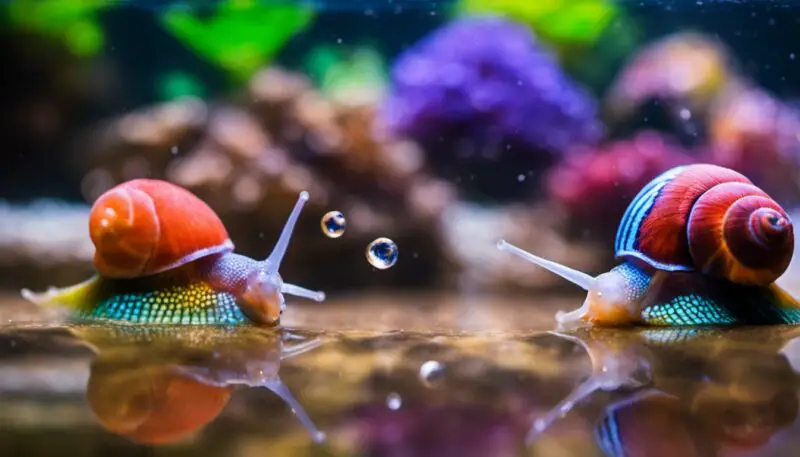
As you explore the world of mystery snails, it’s important to understand their biology and unique characteristics. Mystery snails, or Pomacea bridgesii, come from South America, with the highest density being in Peru, Paraguay, Brazil, and Bolivia 1. These fascinating creatures have several notable features to help them thrive in their environment.
One of the most distinctive aspects of mystery snails is their shell. The shell serves as the primary protective layer for the snail, providing both safety and structural support. Resembling a spiral, the shell is typically smooth and varies in colors, such as brown, black, or golden.
You’ll find the operculum at the shell’s opening, which acts as a trapdoor for the snail. The operculum allows the snail to wedge securely inside its shell when threatened or resting. This feature is essential to their defensive strategy and helps the snail stay protected from predators.
Furthermore, mystery snails have unique eyes situated on long, flexible stalks. These stalks allow them to see in multiple directions and gather valuable information about their surroundings. Their eyes are essential to navigating their environment and searching for food.
In addition to their eyes, mystery snails possess two pairs of antennae. The longer pair found on the head is used to sense their environment, while the shorter pair near the mouth helps locate and manipulate food. Working together, these antennae assist in the snail’s exploration and feeding process.
Mystery snails are also equipped with gills, which help them filter oxygen from the water. This respiratory adaptation is critical for their survival in aquatic habitats. Using their gills, they maintain a steady flow of oxygen to their bodies, ensuring they can easily carry out essential life functions.
As you continue to study mystery snails, you’ll undoubtedly marvel at their intriguing biology and resilience in their natural habitats. Their unique features and adaptability make them fascinating creatures to learn about and popular additions to freshwater aquariums.
Caring for Your Pet
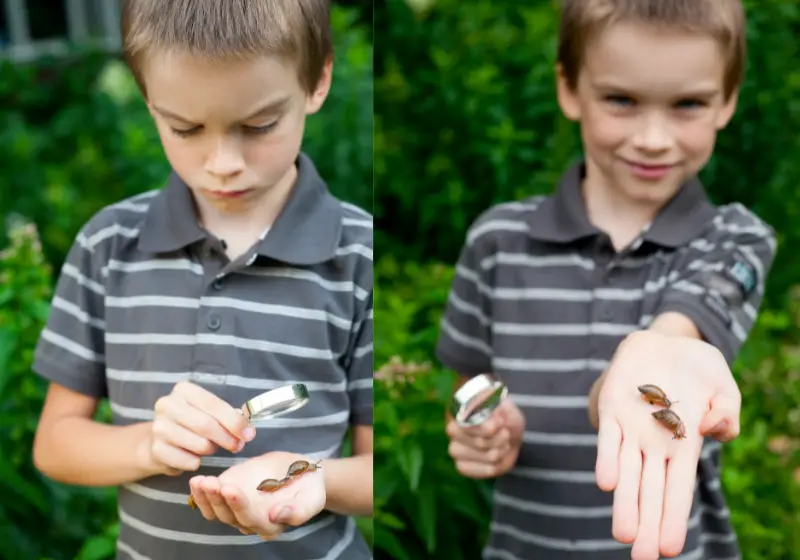
A well-maintained environment ensures the health and happiness of both your betta fish and mystery snails. Start by selecting an appropriate tank. The size should depend on how many pets you plan to keep, but choose a sturdy tank with a lid, as mystery snails are known to escape (source).
The temperature should be closely monitored to ensure both bettas and mystery snails are comfortable. Aim for a stable temperature range between 75-80°F. Regarding water pH, both species thrive in slightly acidic or neutral pH levels, ranging from 6.5 to 7.5.
A healthy diet is vital for your pets. Mystery snails are great tank cleaners; they consume algae and excess fish flakes or pellets (source). Bettas, on the other hand, prefer a diet heavy on proteins and fibers. Feed your betta fish pellets or flakes specifically formulated for them.
Substrate selection is essential for providing an optimal habitat. A soft and smooth substrate, such as sand or fine gravel, works best. This helps prevent injury to both your betta fish and your mystery snails.
Regarding compatibility, bettas and mystery snails can coexist harmoniously (source). Nonetheless, watching their interactions is essential, as bettas can sometimes show signs of aggression. Male bettas, in particular, may be more likely to act aggressively towards snails or other tank mates (source).
Paying close attention to temperature, pH, food, and overall tank environment can ensure a healthy and pleasant coexistence for your betta fish and mystery snails.
Aquarium Conditions
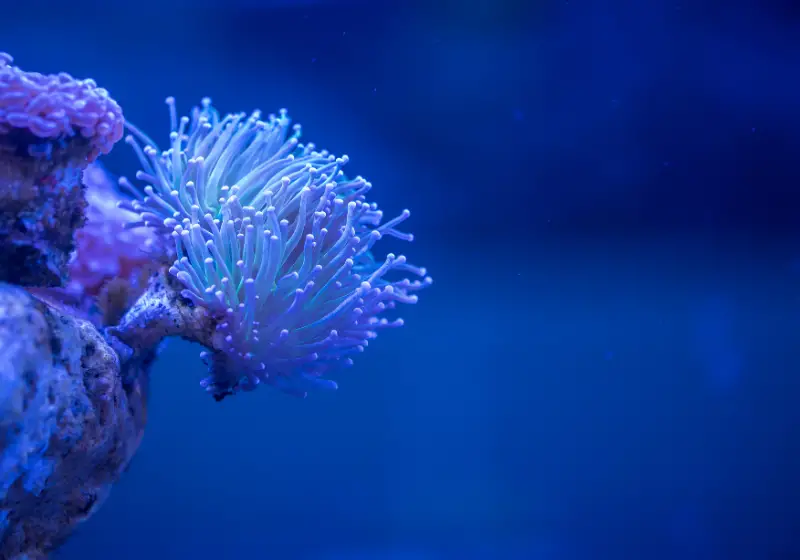
When setting up an aquarium for your mystery snail and betta tankmates, it is essential to consider both species’ requirements for a healthy and stress-free environment. Ensure to provide appropriate water temperature, pH level, water quality, and proper water hardness for both mystery snails and bettas to thrive.
Firstly, you should maintain a water temperature between 76-82°F. This range suits bettas and mystery snails, ensuring their health and well-being. Use a reliable heater and thermometer to consistently regulate and monitor the aquarium’s temperature.
Regarding water parameters, the pH level is crucial in providing a suitable environment for both species. Maintain a pH range of 7.0-7.5, which is ideal for mystery snails and bettas. A stable pH level is essential to avoid discomfort or stress for aquatic pets. You can test and adjust the pH using testing kits and pH modifiers available at pet stores.
Water quality is critical for the well-being of both bettas and mystery snails. Regularly test the water conditions for ammonia, nitrite, and nitrate levels. Keep ammonia and nitrite levels as close to zero as possible while maintaining nitrate levels below 20 ppm. This can be achieved through regular water changes and proper filtration systems.
Water hardness is another factor to consider for mystery snails and bettas. Aim for a water hardness range of 3-10dKH, as this helps maintain their shells’ health in mystery snails and supports bettas’ overall well-being. Adjust the hardness using proper aquarium additives if necessary.
In conclusion, by closely monitoring and maintaining adequate aquarium conditions, you can create a harmonious habitat for both your mystery snails and bettas to coexist peacefully and healthily.
Snails As Tankmates

When considering adding snails as tankmates for your betta fish, ensuring compatibility between the species is essential. Several types of snails can become valuable additions to your betta’s aquatic community. Not only do snails help maintain a clean environment, but they also coexist peacefully with bettas.
Mystery snails and bettas are found to be quite compatible. Mystery snails usually mind their own business, making them perfect tankmates for betta fish. However, it is essential to note that male bettas tend to be more aggressive than females. You must be prepared for potential challenges if you decide to keep a mystery snail with a male betta.
Assassin snails can also be considered tankmates for bettas. These snails are known for their carnivorous nature and ability to keep a check on the population of other snails like pond snails and ramshorn snails.
Nerite snails are another ideal option for betta tank mates. They are known for their algae-eating abilities, which can help to keep your tank clean. Your betta fish will likely not bother them due to their peaceful nature. Ensure to include hiding spaces for the nerite snails to retreat to, as it promotes a harmonious community.
Ramshorn snails are small and tend to mind their own business, but it is essential to be cautious when adding them to your betta tank, as their population can quickly multiply. If not controlled, the excessive growth in their numbers can lead to an imbalance in the tank conditions.
Pond snails are another option for betta tank mates. However, they breed quickly and might crowd the tank, leading to a decline in the water quality and posing a threat to the tank’s overall health. A well-maintained community with compatible species ensures a thriving aquatic environment for every inhabitant.
In conclusion, choosing the right type of snails as tankmates requires careful consideration of their compatibility with bettas and their impact on the tank’s environment. You can create a harmonious and healthy aquatic community by selecting the most suitable snail species and providing adequate care.
Mystery Snails Diet

Their diet preferences are quite diverse when it comes to feeding your mystery snails. They consume various materials in your aquarium, keeping it clean and healthy. You can offer them pellets, which are specially formulated for snails.
One of their primary food sources is algae. You’ll often see them gliding across your tank’s glass or other surfaces, consuming the green algae growing there. They are adept at keeping your tank free from unwanted build-up. But if your tank is low on algae, you can always provide algae wafers as an alternative.
In addition to algae, mystery snails enjoy dining on decaying plants, making them a great addition to a planted aquarium. They’ll help prevent any dead or decaying plant matter from becoming an issue in your tank. Ensure that your plants are compatible with the snails to avoid any potential damage to healthy, live plants.
Another food source for mystery snails is biofilm, which is a thin layer of microorganisms that forms on surfaces within the tank. Biofilm is natural and beneficial for your aquarium, as it aids in nutrient cycling. Your mystery snails will graze on it, helping to maintain a healthier environment.
In conclusion, providing a well-rounded diet for your mystery snails is essential to their well-being. Including pellets, algae, plants, and biofilm in their diet will ensure that they remain healthy and active in your aquarium.
What do Mystery Snails Eat – What to Feed Mystery Snails – Mystery Snails Diet
Breeding Mystery Snails
When it comes to breeding mystery snails, the process might seem a bit daunting at first, but with the right knowledge and planning, you can successfully breed these unique creatures.
First, you must ensure that you have a proper environment for them. Your tank should have ample space, and it’s important to maintain clean water conditions with stable temperatures. It would be best to avoid housing mystery snails with aggressive tank mates, like female bettas, to reduce the chance of conflict during the breeding process.
Having both males and females in the tank is essential to get mystery snails to mate. Males tend to be slightly smaller than females and have a differently-shaped shell opening. You can increase the likelihood of successful breeding by providing them with a stress-free environment and a proper diet.
Feeding your mystery snails a well-balanced diet rich in calcium can also help improve the health of their shells, which can enhance their ability to reproduce.
After mating has occurred, female mystery snails will lay their eggs in a cluster above the water line. Provide a safe, accessible space for them to lay their eggs – a secure spot away from other tank inhabitants, like bettas, is recommended. Keep the humidity in the tank high to ensure proper incubation of the eggs.
The eggs will typically hatch within two to four weeks, depending on the temperature and humidity of the tank. Once the baby snails emerge, they will go to the water to feed on algae and leftover food particles. Be cautious, as the small snails can be more vulnerable to predation by tank mates.
Throughout the entire breeding process, maintain a watchful eye on your mystery snails and other tank inhabitants. By doing so, you’ll be able to address any issues that arise, ensuring a more successful breeding experience.
Checking Health Status

When considering the compatibility of mystery snails and bettas, it’s important to monitor the health status of both creatures. Watch for signs of good health and early indicators of stress or disease.
One way to observe the health of your mystery snail is by examining its shell. A strong shell indicates a well-maintained and healthy snail. A mystery snail with a healthy shell will have a vibrant color and a smooth texture. If you notice any cracks, chips, or discoloration, it may indicate stress or ill health.
To ensure your betta fish is healthy, observe its behavior and appearance. A healthy betta should have bright colors and smooth, flowing fins. In addition, your betta should be active and responsive, easily swimming around the tank and exploring its surroundings. Lethargy or clamped fins can be signs of stress or health problems in bettas.
Keep a close eye on the interactions between your betta and mystery snail. If both creatures are healthy and not show any signs of stress or disease, they may coexist peacefully. However, monitoring their behavior is essential, ensuring both have enough space and are not constantly exhibiting aggressive tendencies.
Finally, maintaining a clean and stable environment is crucial for the overall health of both your mystery snail and betta fish. Regular water changes, proper temperature, and appropriate pH levels are key factors in maintaining a stress-free and healthy tank.
Other Snail Species

In your search for the perfect tankmate for your betta fish, you might also consider other snail species. Each species has its unique characteristics and care requirements, so let’s explore some popular options.
Apple snails (Pomacea bridgesii) are a popular snail that can grow quite large, sometimes reaching up to six inches in diameter. They’re known for their voracious appetite for algae and detritus, making them excellent tank cleaners. However, you should be cautious when choosing apple snails, as some species can become invasive and harm plants in your aquarium. It’s best to stick with apple snails labeled “mystery snails,” which have a more manageable size and appetite.
Japanese trapdoor snails (Viviparis malleatus) are a peaceful species suitable for living with bettas. They are relatively easy to care for, requiring only a well-filtered tank and plenty of plants for them to graze on. These snails can grow to about two inches in size and are known for their ability to control algae without harming your plants.
Malaysian trumpet snails (Melanoides tuberculata) are another option, though you need to be aware of their potential to reproduce rapidly. They have a unique shape, resembling a long, slender cone, and live primarily in substrate, where they help maintain a healthy balance of nutrients. However, their population can quickly overrun your tank if not managed correctly.
Finally, the red-rimmed melania (Melanoides spp.) is a snail species known for their eye-catching shell patterns and active behavior. They are eager scavengers and can help control algae, but like Malaysian trumpet snails, they might breed rapidly. It’s important to monitor the population closely to avoid overcrowding.
In conclusion, while several other snail species could potentially share a tank with your betta fish, choosing carefully based on size, temperament, and reproductive habits is essential. Making an informed decision can help ensure a peaceful, thriving aquarium.
Frequently Asked Questions: Mystery Snails and Bettas

Are mystery snails a good tank mate for bettas?
Yes, mystery snails can be a good tank mate for bettas. While some bettas may be aggressive towards tank mates, many can coexist peacefully with larger snails like mystery snails. To ensure harmony between your betta and snail, provide ample space and hiding spots to avoid territorial disputes. You can also consider choosing a large snail with a trap door to keep your snail safe from potential nipping.
Will mystery snails and bettas compete for food?
Mystery snails and bettas have different dietary preferences, so they generally do not compete for food. While bettas are carnivorous, mystery snails primarily feed on algae, leftover fish flakes, and betta pellets. These scavenging behaviors can be beneficial for your tank’s cleanliness as they help reduce the build-up of waste.
How to introduce mystery snails to a betta tank?
Introducing mystery snails to your betta tank should be done in a gradual manner to minimize stress. Begin by acclimating the snail to the tank’s water temperature and chemistry. Place the snail in a separate container and slowly mix in water from the betta tank over the course of an hour. Once the snail has adjusted, gently release it into the tank, ensuring that it lands on the substrate or a decoration.
How many mystery snails can live with a betta in a 10-gallon tank?
In a 10-gallon tank with a betta, it’s usually best to limit the number of mystery snails to one or two. Overcrowding can lead to water quality issues and increased aggression. Monitor water parameters and provide ample hiding spaces for your betta and the snails to keep everyone happy.
What to feed mystery snails in a betta tank?
Mystery snails are efficient at scavenging for food, so they’ll consume any leftover fish flakes and betta pellets. Additionally, you can offer them blanched vegetables like spinach and kale, along with algae wafers or tablets to ensure they receive a balanced diet.
Do mystery snails have any impact on betta fish health?
Mystery snails can have a positive impact on the overall health of betta fish indirectly. By consuming algae and leftovers, they help reduce nitrate levels and improve water quality in the tank. However, it’s essential to maintain proper tank conditions and monitor the snails for signs of illness, as any unhealthy tank mate can potentially introduce contaminants that could affect your betta’s health.



![Do Assassin Snails Eat Each Other? [Full Guide]](https://allourcreatures.com/wp-content/uploads/2021/11/assassin-snail-768x465.jpg)
